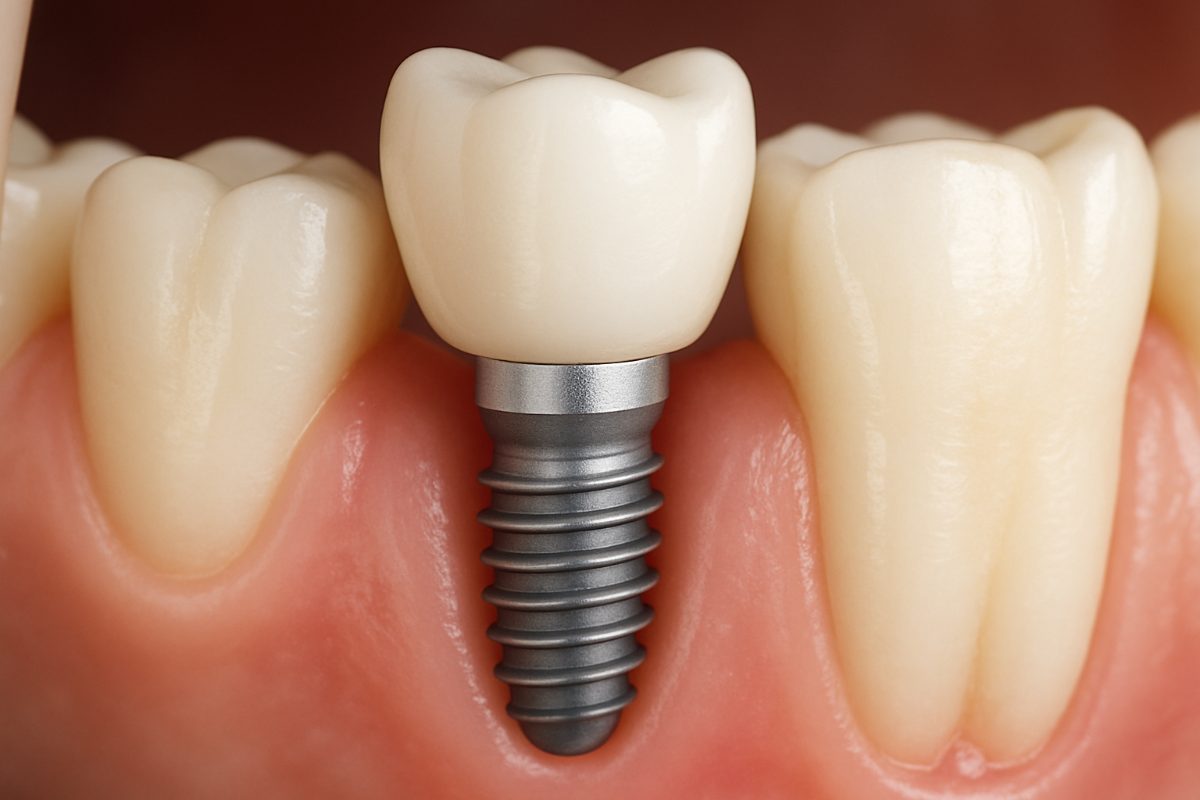If you’re wondering what are the steps for getting a tooth implant, the process is predictable and can be broken into clear stages so you know what to expect. This guide explains each step—from planning to the final crown—and what you should ask at your consult.
A quick answer: what are the steps for getting a tooth implant
Consultation and treatment planning, any prep work (extractions, grafts), implant surgery, healing and osseointegration, then the final restoration.
Step 1 — Consultation & treatment planning
Medical and dental history review
Bring a list of medications, allergies, and any major health issues. Conditions like diabetes or medications that affect bone healing matter. A clear history helps your team plan safe timing and anesthesia.
Clinical exam and digital imaging
Expect X-rays or a CBCT scan to map bone, nerves, and sinuses. Digital smile design tools can help place the implant for the best look and function. Imaging tells the dentist if bone grafting or sinus lifts are needed.
Choosing the right implant option
Options include a single implant and crown, an implant-supported bridge for several missing teeth, or full-arch solutions. Your anatomy, budget, and goals determine the best choice.
Step 2 — Pre-operative preparation
If you have gum disease or a tooth that must be removed, those are handled first. Bone grafts or sinus lifts are planned when jawbone is too thin. You’ll get pre-op instructions about fasting, medications, and arrival time, and discuss sedation choices from local anesthesia to IV sedation.
Step 3 — Implant placement surgery
A small incision exposes the bone, a pilot hole is drilled, and the titanium implant is placed into the jaw. Some cases allow immediate placement after extraction; others use a staged approach with healing time between steps. Most single implant surgeries take under two hours, depending on complexity and sedation.
Step 4 — Healing and osseointegration
Osseointegration is the process where bone fuses to the implant surface. This usually takes several weeks to a few months. You may wear a temporary crown or bridge while healing. Stick to soft foods initially and follow home-care rules to avoid stressing the area. Watch for signs of trouble like severe pain, swelling that worsens, or looseness.
Step 5 — Final restoration and follow-up
Once integrated, your dentist attaches an abutment and then the permanent crown or prosthesis. The bite is adjusted and esthetics confirmed. Regular follow-ups and professional cleanings help implants last. Nightguards may be recommended for teeth grinders.
Risks, complications, and how to reduce them
Common issues include infection, implant failure, nerve or sinus complications, and prolonged swelling. Careful planning, good oral hygiene, and choosing an experienced team cut risks. Call your provider if you see persistent pain, pus, or looseness.
Costs, timelines, and financing options
Timelines run from a few months to up to a year for complex cases. Costs vary by grafting needs, number of implants, and the type of restoration. Many practices offer financing plans, and some dental insurance covers part of the restoration.
Why choose NuSmile Dental for implants
For patients asking what are the steps for getting a tooth implant in Seminole, FL, NuSmile Dental uses modern digital planning, full-arch solutions, and advanced grafting when needed. Dr. Nadia ONeal and Dr. Ryan Serra bring extensive implant and surgical training and work together to personalize care.
Next steps — ready to learn more or book a consult?
Prepare for your consult by listing health details, photos of your smile, and questions about timeline, costs, and sedation. If you want a personalized plan for what are the steps for getting a tooth implant in Seminole, FL, schedule an evaluation to get started.


